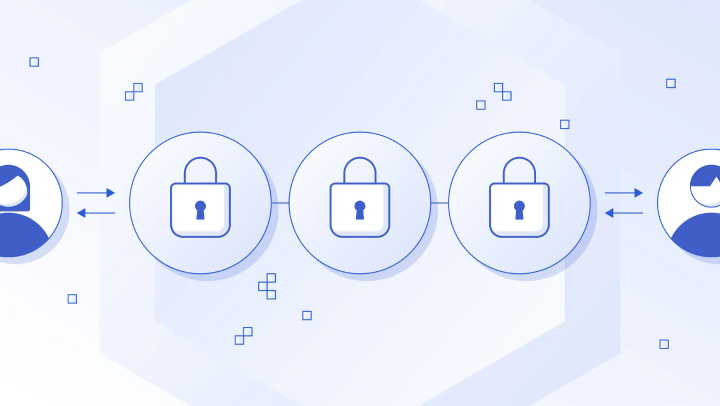What Is Cross-Chain Gaming?
Cross-chain gaming refers to games that leverage cross-chain interoperability protocols to enable in-game assets and data to flow seamlessly between blockchains.
Cross-chain technology expands the design space for Web3 innovation across every vertical, be it DeFi, NFTs, gaming, or social. Like the transition from siloed intranets to the huge, interconnected Internet we know today, cross-chain is poised to unify the multi-chain ecosystem, unlocking a new era of cross-chain UX.
This blog dives into how cross-chain technology such as Chainlink Cross-Chain Interoperability Protocol (CCIP) is transforming Web3 game design to supercharge interoperability, unleash blockchain specialization, and unlock universal liquidity.
<div class="educational-divider sections-divider"></div>
Understanding Cross-Chain Technology
Cross-chain technology simply refers to the ability of different blockchain networks to communicate with each other. For example, passing a message from blockchain A to blockchain B to mint an NFT, or transferring an NFT between two (or more) chains. This is only possible with cross-chain technology. Without it, each blockchain is its own isolated ecosystem: Fully connected internally but with zero connectivity to anything outside of it.

<div class="educational-divider sections-divider"></div>
Cross-Chain Gaming
What Is Blockchain Gaming?
A blockchain game is any game that uses blockchain technology to enhance or rearchitect traditional video games. At a base level, this takes the form of tokenized in-game assets, whether it’s an item or a currency. However, the integration of blockchain technology into games can also provide players with the ability to vote on their favorite outcomes, rearchitect the UX experience to provide player-owned logins, and create permanent games.
How Does Cross-Chain Gaming Work?
The benefits of cross-chain gaming for the Web3 gaming ecosystem can be broken down into three parts: interoperability, specialization, and liquidity.
Interoperability
Interoperability refers to the ability for players to use assets from one game in others, creating a richer and more interconnected gaming experience. In the context of an on-chain game, it also refers to the ability to build on top of a game’s existing code to expand the scope of the game itself.
Cross-chain messaging protocols like CCIP further unlock interoperability by enabling any developer from any blockchain to build an adjacent experience using the same assets, such as NFT finance protocols or NFT lending and renting.

Specialization
Cross-chain technology enables blockchains to specialize in serving certain game functions based on their unique advantages. By implementing a connected set of cross-chain smart contracts using CCIP, developers can choose different blockchains based on their needs while keeping a unified, cohesive set of cross-communicating smart contracts.
For example, a game developer can mint their rarest assets on Ethereum, a high-cost but extremely secure blockchain, all while keeping the gameplay itself on a high-speed, fast-finality, low-cost blockchain. This segmentation of labor between blockchains helps developers build games to the best of their ability rather than building to the specifications and limitations of the single blockchain they chose to build on. With cross-chain, there are no more tradeoffs between blockchains—only synergies.
Liquidity
Though not as important as it is for decentralized finance (DeFi), the liquidity of in-game assets is an essential consideration for many Web3 games, especially those with economic gameplay—where buying, selling, and trading in-game assets are a core part of the game.

Cross-chain protocols like CCIP help developers unify liquidity between blockchains using a single development gateway. This unlocks cross-chain NFT marketplaces where a buyer from one blockchain can directly transact with a seller on another blockchain in the currency of their choice.
Multi-Chain Gaming vs. Cross-Chain Gaming
While cross-chain and multi-chain sound similar, they are in fact completely distinct concepts.
Multi-chain gaming refers to games that operate on multiple blockchains simultaneously. In practice, this largely means that in-game assets acquired on one blockchain are not equivalent to assets on another chain, and there is little to no connection between them. If gameplay actions are on-chain, multi-chain implementations can be seen as LAN parties: Each blockchain is its own LAN party, with only players connected to the specific LAN able to play together.
In contrast, cross-chain gaming is like online gaming today—where anybody in the world with access to the Internet can play with another person, even if they’re all the way on the other side of the world. In-game assets can be transferred from blockchain to blockchain as needed, and Web3 games can be implemented across chains, working together to share assets, data, and operations.
<div class="educational-divider sections-divider"></div>
How Chainlink CCIP Solves the Cross-Chain Problem
Historically, cross-chain bridges and messaging protocols have suffered from poor security, resulting in $2.6B+ in value being exploited from bridges in 2022 alone. But the demand for cross-chain—and the potential of what can be built with access to a secure cross-chain messaging protocol—has remained steady, as evidenced by $7B+ in monthly bridge volume.

While most of these exploits targeted the fungible tokens backing wrapped tokens and not in-game NFTs, there is little meaningful difference in their security considerations—an NFT bridge in function is very similar to a fungible token bridge. This is because both bridge implementations involve, at their core, passing data messages that control the token movement between blockchains.

This is where the Chainlink Cross-Chain Interoperability Protocol (CCIP) comes in, with security and reliability as its defining features. CCIP leverages the same high-quality Chainlink node operators and consensus technologies that have securely enabled more than $8 trillion in value for DeFi protocols—providing game developers with the confidence required to build secure cross-chain games.
<div class="educational-divider sections-divider"></div>
Conclusion
Cross-chain gaming represents the next evolutionary step in the world of digital gaming. By breaking down the barriers between different blockchains, it paves the way for a more interconnected, fluid, and dynamic gaming experience. As the technology matures, we can expect to see even more innovative gameplay mechanics and richer virtual economies sprout from this interconnectivity provided by Chainlink CCIP.
If you’re a game developer looking to create the next generation of Web3 gaming experiences, check out this CCIP tutorial.














